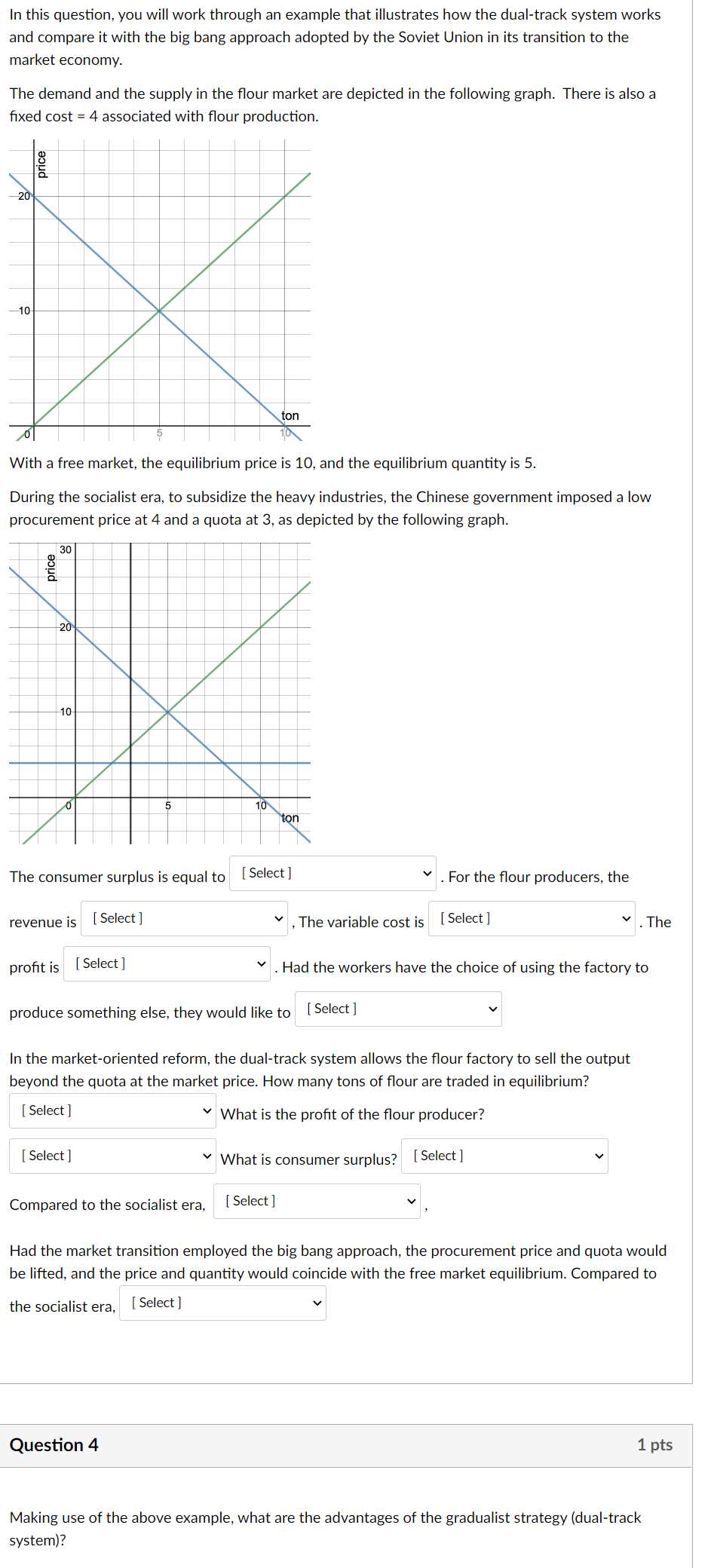
In this question, you will work through an example that illustrates how the dual-track system works and compare it with the big bang approach adopted by the Soviet Union in its transition to the market economy. The demand and the supply in the flour market are depicted in the following graph. There is also a fixed cost = 4 associated with flour production. price 20 -10 ton With a free market, the equilibrium price is 10, and the equilibrium quantity is 5. During the socialist era, to subsidize the heavy industries, the Chinese government imposed a low procurement price at 4 and a quota at 3, as depicted by the following graph. 30 price 20 10 0 5 10 ton The consumer surplus is equal to [ Select ] . For the flour producers, the revenue is (Select ] The variable cost is [Select ] The profit is [Select ] Had the workers have the choice of using the factory to produce something else, they would like to [ Select] In the market-oriented reform, the dual-track system allows the flour factory to sell the output beyond the quota at the market price. How many tons of flour are traded in equilibrium? [ Select ] v What is the profit of the flour producer? [ Select ] What is consumer surplus? [Select] Compared to the socialist era, [ Select] Had the market transition employed the big bang approach, the procurement price and quota would be lifted, and the price and quantity would coincide with the free market equilibrium. Compared to the socialist era, [Select] Question 4 1 pts Making use of the above example, what are the advantages of the gradualist strategy (dual-track system)? In this question, you will work through an example that illustrates how the dual-track system works and compare it with the big bang approach adopted by the Soviet Union in its transition to the market economy. The demand and the supply in the flour market are depicted in the following graph. There is also a fixed cost = 4 associated with flour production. price 20 -10 ton With a free market, the equilibrium price is 10, and the equilibrium quantity is 5. During the socialist era, to subsidize the heavy industries, the Chinese government imposed a low procurement price at 4 and a quota at 3, as depicted by the following graph. 30 price 20 10 0 5 10 ton The consumer surplus is equal to [ Select ] . For the flour producers, the revenue is (Select ] The variable cost is [Select ] The profit is [Select ] Had the workers have the choice of using the factory to produce something else, they would like to [ Select] In the market-oriented reform, the dual-track system allows the flour factory to sell the output beyond the quota at the market price. How many tons of flour are traded in equilibrium? [ Select ] v What is the profit of the flour producer? [ Select ] What is consumer surplus? [Select] Compared to the socialist era, [ Select] Had the market transition employed the big bang approach, the procurement price and quota would be lifted, and the price and quantity would coincide with the free market equilibrium. Compared to the socialist era, [Select] Question 4 1 pts Making use of the above example, what are the advantages of the gradualist strategy (dual-track system)







